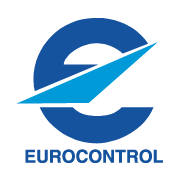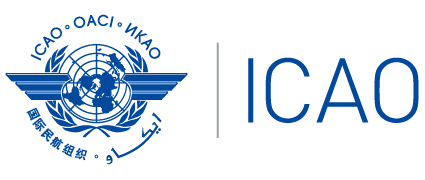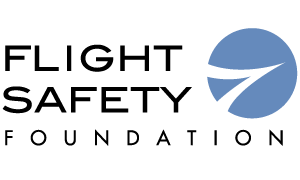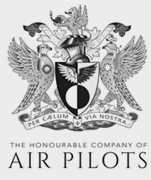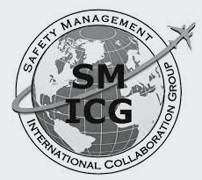Engaging the organisation on DEI
Engaging the organisation on DEI
When leading a DEI programme in an aviation/aerospace organisation, the programme should be linked directly to the organisation’s strategic goals.
To have an integrated approach, the DEI programme should address five elements:
A good way to start building a DEI roadmap is to understand stakeholder expectations. Stakeholders could be the customers of aviation organisations, the consumers of the services provided, shareholders, investors, owners, government, industry, local communities, employees, suppliers, or any other significant entity for the organisation in question.
Furthermore, organisations should understand which key elements and stages of diversity performance are relevant to them. Data should be collected and metrics should be developed to monitor the progress of DEI efforts, measuring the DEI gap and supporting a roadmap to close it.
The first step on the roadmap can be raising awareness by addressing a .
Here are a few key questions to be addressed:
Many studies have found that diversity and innovation are linked. According to a study carried out by Rocio Lorenzo and Martin Reeves (“How and Where Diversity Drives Financial Performance” – Harvard Business Review, 2018), companies with above-average total diversity had 19% points higher innovation revenues. That data was confirmed by another study that found that companies in the top quartile for racial and ethnic diversity were 35% more likely to have financial returns above their respective national industry medians (McKinsey & Company, “Why diversity matters,” 2015). Furthermore, companies with gender diversity earned around 15% more than the industry average (McKinsey & Company, “Diversity wins: How inclusion matters”, 2020).
Attracting talent
 Organisation’s efforts to promote diversity in the workplace can reflect well on its reputation. This is because the organisation becomes more attractive to some of the top talent available. When qualified candidates know that they can have a successful future in an organisation’s workplace, whether they are from a minority group or not, organisations are able to access a wider range of talent and candidates with strong skill sets. For more information, see Chapter 4 (“HR best practices in the area of DEI”).
Organisation’s efforts to promote diversity in the workplace can reflect well on its reputation. This is because the organisation becomes more attractive to some of the top talent available. When qualified candidates know that they can have a successful future in an organisation’s workplace, whether they are from a minority group or not, organisations are able to access a wider range of talent and candidates with strong skill sets. For more information, see Chapter 4 (“HR best practices in the area of DEI”).
Fostering innovation
A diverse workforce fosters innovation, improves problem-solving outcomes, and leads to better decision-making.
McKinsey & Company, “Diversity Wins: How Inclusion Matters.” (2020)
Research has found that organisations that welcome diversity and a difference of perspectives offer more room for creativity and innovation. This is because diverse teams are more accustomed to looking beyond their own perspective, which has a positive impact on organisations as such teams are able to find creative and unique solutions.
Innovation is a key driver of success in the aviation industry, particularly in the face of environmental uncertainties and digitalisation. For example, strategic orientation, combined with a focus on innovation, enables airports to navigate uncertain conditions and adapt to changing market dynamics. Innovation is attractive to potential job candidates. Therefore, aviation and aerospace organisations can benefit from consistent messaging through various means, such as social media, targeted communications, marketing, and advertising on the new technologies used in the sector. For example, drones, AI, and other new and complex technologies changing the industry are inspirational for younger generations.
Mainstreaming DEI
On a corporate level, it is important to develop, implement and deploy a strategy as well as a corresponding policy and plans (e.g. a gender equality plan, a DEI officer, relevant procedures) and to incorporate DEI policies into business plans, strategic plans, communication plans and the corporate social responsibility strategy.
Engaging with EU institutions and other International organisations
CANSO, EUROCONTROL, IATA, EASA, ICAO, trade unions, IFATCA, IFALPA, IFATSEA, IFIMA, IFAIMA, and European institutions (e.g. the European Commission and the European Parliament) are working on exchanging best practices, developing and endorsing toolkits, benefitting from gender equality programmes, projects, participation in events and roundtables, inviting representatives from other organisations to discussions, and organising joint workshops, events and programmes. For example, the guidance provided by the Women in Transport – EU Platform for Change, and the Diversity Ambassadors in Transport, can be implemented.
Organisations can not only participate but can also deliver information from these forums via newsletters, social media, and common activities. It is important that this is not a one-off effort but an ongoing process. Supporting other organisations’ posts on social media can create a ripple effect and amplify the message.
Another idea is for individual staff members to engage with the Diversity Ambassador group, as this is one of the mechanisms of the EC/DG MOVE to engage on this topic. There are members of the DEI network who are Diversity Ambassadors and could support us in this undertaking.
What to include in a DEI plan
- Figures
Information on the business case for DEI policies and why this would be beneficial financially should be present (see chapter on metrics).
- Gender equality plans
EU funding can be sought to develop gender equality plans. It is of strategic importance that a human resources policy be implemented, in which diversity is regarded as a source of enrichment, innovation and creativity and where inclusion is promoted by managers and all staff through policies improving work-life balance and flexible working arrangements for all genders through appropriate support, particularly for underrepresented genders, and through the implementation of the commitments in the UN Convention on the Rights of Persons with Disabilities and the UN’s Sustainable Development Goal for gender equality.
- Engaging with senior management
All members of senior management should take part (operational managers, recruitment managers, strategic managers, change management, decision-makers) in training to raise awareness of the benefits of DEI and the risks associated with not taking action, addressing unconscious bias, and how this can also affect them.
- Engaging with middle management
Training should be developed and made available to middle managers to show them the benefits of DEI, the importance of addressing unconscious bias, and how this can also affect them.
- Engaging with professional staff organisations and social partners
Professional staff organisations (e.g. IFATCA) and social partners should be seen as allies and be involved all the way when developing DEI plans. As they work closely with staff, people talk with them, and they are aware of the problems. They can convey to the employers about relevant information and start taking action. They should be included in training and presented with the relevant figures.
- Engaging with staff
Training should be developed and made available to staff in order show them the benefits of DEI, address unconscious bias and explain how it can also affect them. They should also be invited to participate in creating policies or rules, choose their representative for DEI matters, and celebrate DEI days.
- Engaging with NGOs, networks and associations to create win-win opportunities:
Examples include Aviation for All, the International Aviation Women's Association (IAWA), and the European Pride Aviation Network (EPAN). Please consult Chapter Five – DEI collaborations and partnerships – for more information.

